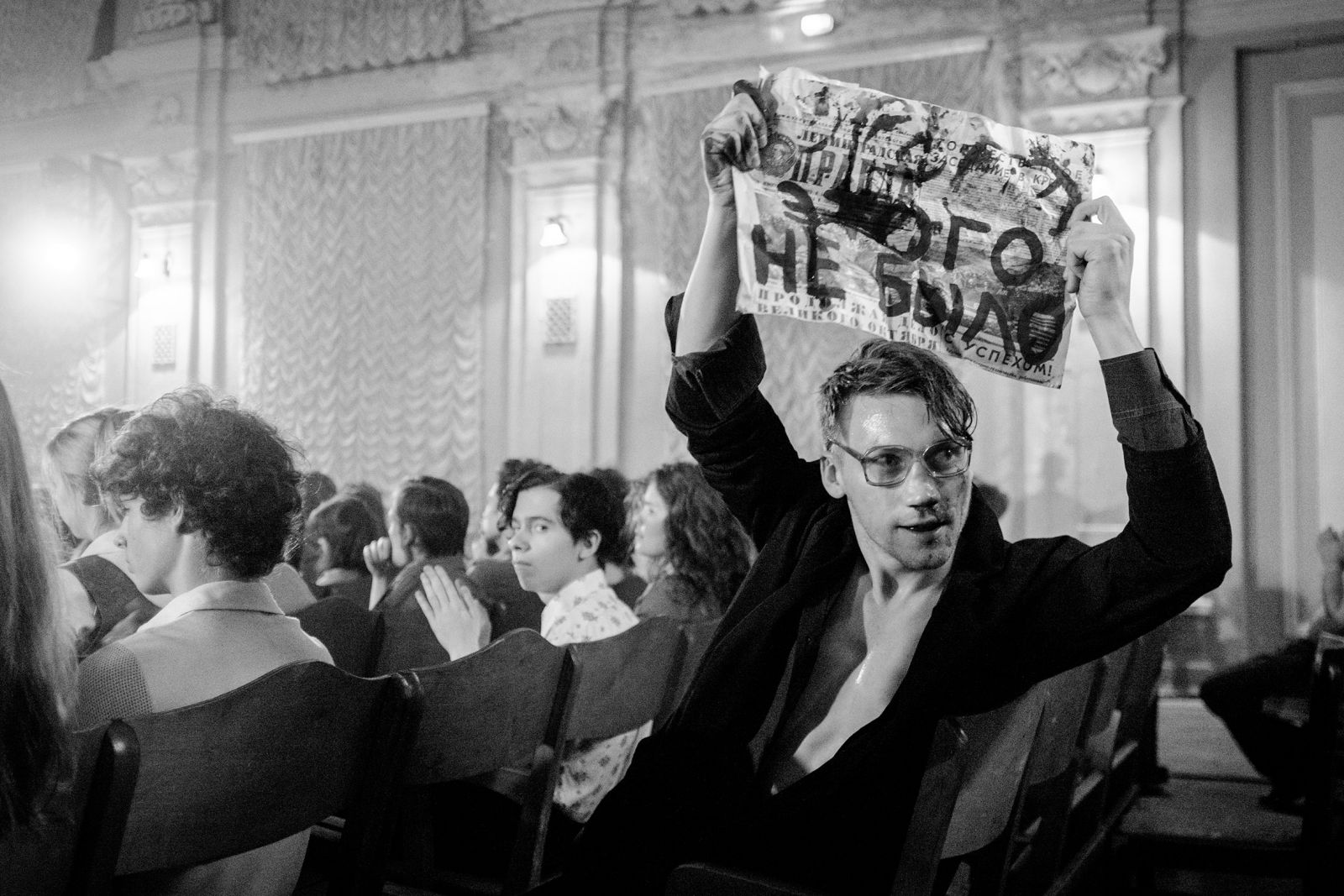Musical film

Musical film is a genre, which includes scenes of signing and/or dancing. The history of musical begins with the invention and later implementation of sound in film in the 1920s. Several leading film industries (USA, USSR, Germany, India) of that time were working on creating first sound films. These films were half-sound half-silent and consisted of several musical scenes. The first sound films were great commercial success in all film industries, and inspired filmmakers to start producing musicals.
The biggest number of musicals was developed in the United States. After the success of the first sound films, every major Hollywood studio began the production of musicals, while cinema theatres were installing new sound equipment. The boom of musicals happened in 1930, with almost 100 musical films being released in the USA. Most of these films had simple storylines, musical numbers and style, and just exploited the fact of featuring sound in film. Musical numbers were not integrated into the narrative, and usually paused it for the performance.
It all changed with Busby Berkeley, renowned musical choreographer, who came to Hollywood from Broadway. He completely changed the setting of musical numbers, taking them to a fantasy world. His unique style had dancers forming various geometrical shapes in a style of kaleidoscope. The camera was not still but moved in all possible directions. However, most of the time, the numbers were not integrated in the film’s narrative, as they didn’t develop its plot and characters.
1. Watch these examples of scenes directed and choreographed by Busby Berkeley. What do you think about them? What effect does they have on you?
Footlight Parade (1933)
Dames (1934)
Starting from the end of 1930s and the beginning of the 1940s, musical numbers became more integrated, for example, in film The Wizard of OZ (1939). Some of the songs were connected to the events that happened within the film, or to the characters’ emotions. Judy Garland, who played the main part in The Wizard of OZ, became the biggest star of musicals of that era. Her characters sang about their feelings, hopes and dreams.
In the 1950s, musical numbers became completely integrated. The main star of musicals of that era was Gene Kelly, whom you might know from American in Paris (1951) and Singin’ In the Rain (1952). He embodied the celebration of personal and natural musical expression. He could dance everywhere. His musical scenes developed characters, contributed to the narrative and were technically and artistically superb.
The period from 1930s until the 1950s is considered to be the golden age of musicals, during which musical established itself as a film genre.
2. Which Hollywood musicals have you seen? What do you think about them? How important it is for you that the musical numbers are integrated in film’s narrative?
3. What do you think is the difference between modern and classic musicals?
Soviet Musical
Hollywood musicals of the 1930s heavily influenced the development of Soviet musical film. Soviet filmmaker Gregory Alexandrov, who visited Hollywood in 1930, directed musical comedy The Jolly Fellows (1934), which became an immediate success. Subsequent musicals directed by Alexandrov, such as Circus (1936) and Volga-Volga (1938), were an enormous commercial success, with songs from the films becoming popular hits. Although some of Alexandrov’s work had a propagandistic message, ultimately it provided escapism for Soviet public and made them believe that life is better than it is.
In the following decades, Soviet filmmakers continued to develop musicals, mostly of a comedic genre. Especially successful were the films of Leonid Gaidai and Eldar Rjazanov, which remain popular now and are repeatedly shown on national television. However, in modern Russia, musical has lost its former popularity. Nowadays, most musical films are produced directly for television, especially, for entertainment broadcasts on New Year’s Eve.
4. Watch these examples of scenes from Volga-Volga directed by Gregory Alexandrov and Ivan Vasilievich Changes Profession (1973) directed by Leonid Gaidai. What do you think about them? How different are they from each other and from Hollywood musicals?
Leto as a Musical
Leto is a musical, which combines integrated and not integrated musical numbers. There are scenes in which characters perform song to each other somewhere outside, in the club or someone’s flat. But there are also scenes, which have completely fantasy feeling to them, and end with the line This never happened. In one scene train’s passengers sing Psycho Killer by Talking Heads, in another scene the concert in Leningrad rock club becomes energetic and rebellious.
5. What do you think about musical numbers in Leto? Which numbers do you remember the most and why? In your opinion, what is the meaning of the line "This never happened"?







